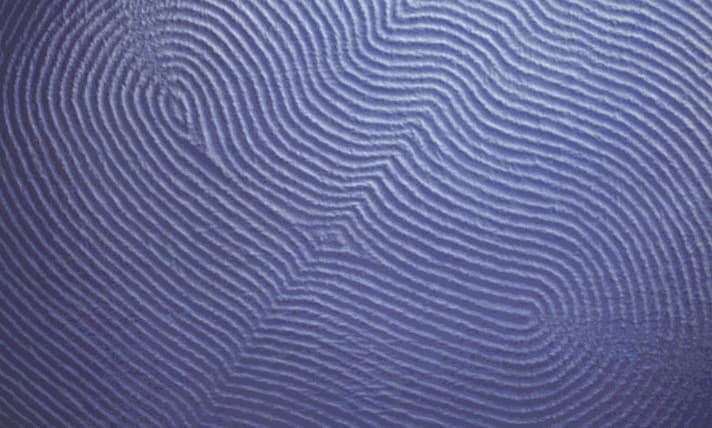If you go out to look at art around L.A. right now, even if you are not bored, you will see at nearly every stop the influence of digitally manipulated imagery or the computer screen experience. This is no longer new news, by any means, but it's still current news.
Nikravan, an L.A. native who started his undergraduate art career making photorealistic paintings, titled his show after a Photoshop function that involves collapsing all visible layers into one. “I've made myself a computer in a way,” he says. “And I don't mean that cynically at all.”
He's sincerely interested in the feel and results of employing repetitive, machine-like moves. For example: If you do what a machine does, only in a hands-on way with art-studio materials, what kind of physical image-viewing experience can you produce?
To make the methodical abstractions on view at Various Small Fires, which appear monochromatic even when he uses multiple colors, Nikravan starts with a wood panel. He then uses concrete or maybe store-bought rocks to build up patterns that are about two inches thick on that panel — a grid or a lattice, perhaps. Then he stretches muslin over the built-up surface before also wrapping the whole thing, panel and fabric, in vacuum-forming plastic. This causes the fabric to adhere tightly to the three-dimensional surface. When he removes the plastic, he can spray-paint, with a matte paint called Cel-Vinyl, which cartoonists often use. Because the surface is still 3-D, if he sprays a lighter color from one angle, for instance, it might make all the peaks and bumps look as if they're lit from that side when he pulls off the fabric and mounts it to thin aluminum. It's now totally flat, but there's evidence of the fact that it was once three-dimensional, albeit confusing evidence. You can't tell what process he went through just by looking.
“You're ultimately only able to deal with the very last layer. All the moves and gestures have been compressed into that single layer. It's all there, but it's kind of always at bay, too,” Nikravan says. “They feel very alien, like they've kind of arrived from nowhere.”
If many of today's artists work with images on computer screens and then replicate them physically, Nikravan's process is the opposite, using a physical process to mimic computers. The work helps draw attention to an issue that bothers Hockney, now 77: Now that artists, Hockney included, use much of digital technology as part of their process, technicalities are less openly discussed. Why don't the mechanics of getting the image you want, like light sources or blurriness, get written about or hashed out more often, and if they're not talked about, will people forget such problems exist?
“Painting is always historically discussed as the build-up of many, many layers over time,” Nikravan says. In a virtuosic painting by Rembrandt, or in something rougher and earthier from de Kooning's Women series, you can see all the evidence of a painter's labor and touch that build up into the finished product. You're invited to think about the details. But when something looks calculated in a machine-like way, it pushes you away from thoughts about human touch and nuances.
This divide between the aloofness of a technologically produced object and the intimacy of an idiosyncratic artwork is what projects such as Nikravan's straddle.
Read more here.
